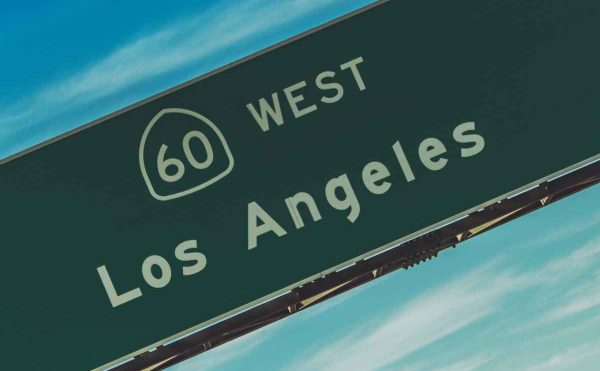When talking about auto insurance, you should learn about these two types: stacked and unstacked. One gives certain benefits you might need, while the other does not. So, what is the difference between stacked and unstacked auto insurance, and what are those?
Stacked insurance combines the physical injury coverage limit of your uninsured and underinsured auto coverage based on respective policies. This insurance mostly applies to underinsured and uninsured auto coverage.
So, when you are involved in an accident with an underinsured or uninsured driver, you will obtain a higher liability limit. Thus, you will have less out-of-pocket expense if you stack insurance. Stacking insurance is combining coverage limits for several vehicles.
A coverage limit is the maximum amount your insurance company will pay for a claim. Therefore, stacking insurance can provide more protection when you are in an accident with an uninsured or underinsured driver.
Stacking insurance, however, is not always permitted by state law. Although stacked insurance offers a higher payout, it is generally more expensive than unstacked one. Stacking your insurance, particularly if you reside in a state with a high rate of uninsured drivers, is a smart choice.
What is the difference between stacked and unstacked auto insurance?

By allowing policyholders to stack coverage, stacked insurance offers more protection than an unstacked one.
Stacked Insurance
When referring to uninsured motorist (UM) coverage limits, “stacking” in the context of auto insurance means combining the limits offered by various policies or to various insured vehicles. Stacking your UM limits, for instance, would give you $55,000 in UM bodily injury coverage if your UM limits are $15,000 in one policy and $40,000 in another.
Stacking increases your coverage depending on how many policies your name is on and how many vehicles you own under one policy. You can stack the coverage limits of two cars under one policy. You can also get added coverage if your name appears on other policies, like a family member’s policy.
The above is the explanation of what is the difference between stacked and unstacked auto insurance.
Unstacked Insurance
Unstacked or non-stacked insurance limits the use of bodily injury coverage provided by an uninsured motorist to the bodily injury limits of the involved vehicle. It means if you only have unstacked insurance, your protection is only as high as the vehicle’s specific protection limit.
Two Types of Insurance Stacking

Insurance stacking can be divided into two main categories: vertical and horizontal stacking, also known as stacking within one policy and across multiple policies. Investigate your options because some states only permit one kind of stacking while forbidding the other, and some states do not permit stacking at all.
Horizontal Stacking
Also known as inter-policy stacking, this stacking allows you to combine protection for several vehicles covered by various policies. Typically, only policies under a single company are allowed to be stacked. When the same claim is submitted to two different insurers, this falls into the insurance fraud category.
For instance, your coverage limit for uninsured motorist bodily injury coverage from your auto policy might be $25,000. Let’s say that at the same time, your name is also listed on your parent’s insurance policy with $15,000 coverage. When you’re involved in an accident with an uninsured driver, you can file a claim by combining these two coverages and obtain $40,000 instead of just $25,000.
Vertical Stacking
By combining coverage for several vehicles insured under the same policy, you can also vertical stack coverage, known as intra-policy stacking.
Consider the scenario where you have two vehicles that are covered by the same auto insurance policy and have $15,000 in uninsured motorist coverage. You can combine your UM bodily injury coverage for $30,000 by vertical stacking policies.
Coverage for Uninsured and Underinsured Drivers

If you are struck by a driver who does not have car insurance, uninsured motorist (UM) coverage assists in covering your accident-related costs. If the at-fault driver’s insurance is insufficient to pay your liabilities after an accident, underinsured motorist (UIM) coverage assists in covering your costs.
UM and UIM coverage comes in a variety of forms:
- After a collision with an uninsured or underinsured driver, UM, and UIM bodily injury coverage may cover your medical costs. Depending on the laws in your state, these coverages may be necessary or optional.
- If your property is damaged by an uninsured or underinsured driver, UM, and UIM property damage coverages can help you pay for the necessary repairs or replacements. Depending on the regulations in your state, these coverages might not be included in your auto insurance plan.
Remember that stacking only works with the coverage’s bodily injury component. Limits for property damage coverage cannot be added to one another.
The Process of Stacking

Stacking may be mandated by state law, permitted by law, or prohibited by law. Additionally, insurers can include non-stacking language in their policies even if the law permits stacking.
Depending on the local law, you can stack your insurance either (1) across two or more various auto insurance policies in your name or (2) on a single auto insurance policy covering two or more cars.
Pros and Cons of Stacked Insurance
When discussing the difference between stacked and unstacked auto insurance, we won’t lure you into thinking you should choose stacking without providing the pros and cons.
Your protection against accident-related costs can be increased by stacking. Stacking enables you to combine several vehicles’ UM and UIM coverage limits. The more coverage limits you gain from stacking, the less you pay.
Higher coverage limits, however, typically come with higher premiums. Accordingly, you might pay more for that coverage if you combine the UM and UIM limits.
Pros and Cons of Unstacked Insurance
Given the previous point, the unstacked gives little to no benefit. But that statement is not true, and you know this if you’re a thorough assessor. This is because unstacked insurance premiums may be less expensive than stacked ones.
This is because adding additional insurance policies raises the overall limit. This also means that your insurer may be required to pay more liabilities for a covered claim. Remember that your coverage will cost more the higher the limit (and vice versa).
The con is that you might be more likely to incur out-of-pocket costs for accident-related expenses if your insurance is unstacked. Based on the explanation mentioned above, it is clear.
All you need to know is the difference between stacked and unstacked auto insurance.
Bagikan










